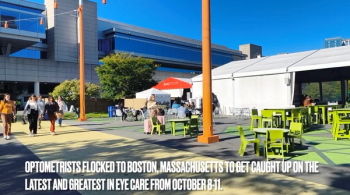
Furthering the adoption of myopia management in Latin America
Ricardo Pintor, OD, FIACLE, gives an overview of the World Council of Optometry’s first Latin America–based virtual event and what challenges Latin America faces in terms of myopia.
Despite the growing prevalence of myopia, there is still a long way to go before myopia management becomes a standard of care among eye care professionals (ECPs) in Latin America.
Results from 2 surveys conducted 4 years apart, in 2019 and 2023, have shown that although more than half of Latin American ECPs integrate myopia management into their practices, a substantial portion are not actively engaging in such interventions.1,2 Those individuals surveyed cited several challenges, including limited knowledge and poor availability of specialized lenses and other related products.
Adding to the challenge, each region in Latin America has its own specific needs, products, and information available when it comes to vision care. With more than 30 countries in Latin America, finding a way to standardize myopia management knowledge and care is essential. We need better education, support from the optometric industry, and more research in the region.
As an optometrist working in Mexico City, Mexico, I’ve focused my practice on myopia management for children, adding new treatments and technology to better meet patients’ vision challenges and offer them high-quality service. Years ago, myopia management was seen as a new discipline for ECPs, demanding a new way to see each patient in our office. I now believe myopia management is necessary for each child whom we see in our practice to protect their vision, both now and in the future.
Taking myopia management from theory to practice
In February, I joined other ECPs as the host for the World Council of Optometry (WCO)’s first Latin America–based virtual event, Myopia Management: From Theory to Practice, held in partnership with CooperVision. Over 4 days, more than 3000 ECPs representing 25 countries across the region attended four 90-minute sessions virtually, all in Spanish, aimed at providing advice and practical actions to get started with myopia management and make it a standard of care. Some of the sessions were also aimed at reaching optometrists who are more experienced in their myopia management journey and interested in delving deeper into practical strategies.
As hosts, we each had the opportunity to select topics specific to the different needs in each of our countries. We received over 100 questions per session. One question we heard often was, “I have very young patients with high myopia. What can I do for these children?” This question confirms the need to implement myopia management in our countries and in our practices earlier. We can’t wait to start myopia management when the patient needs a prescription as high as –10 or –12 D. It underscores the situation in our countries and emphasizes the need to prioritize primary care for myopia.
Key takeaways
There are 3 things I hope attendees took away from the virtual event. First, follow the science. As ECPs, we have an obligation to make recommendations to patients based on the growing body of evidence on myopia. There are practical, evidence-based tools you can implement into your practice.
Second, and what is most important to me, is that ECPs initiate myopia management within their practice now if they haven’t already, conducting early tests for children and carefully selecting advice and treatments tailored to each child’s needs. By starting myopia management early, ECPs can monitor the progress of their patients over time, seize opportunities to prescribe new alternatives, and assess the effectiveness of treatments for individual patients.
Third, the work to adopt myopia management as a standard of care must continue. As a follow-up to the virtual event, the other hosts and I are considering what new events or workshops we can offer in our home countries to continue the conversation.
For those who missed the virtual event, the
References
Management of myopia in Latin America: A preliminary analysis. Group Manejo de la Miopía LATAM. 2019. Accessed April 17, 2024.
Survey on myopia management in Latin America. Group Manejo de la Miopía LATAM. 2023. Accessed April 17, 2024.
Newsletter
Want more insights like this? Subscribe to Optometry Times and get clinical pearls and practice tips delivered straight to your inbox.













































